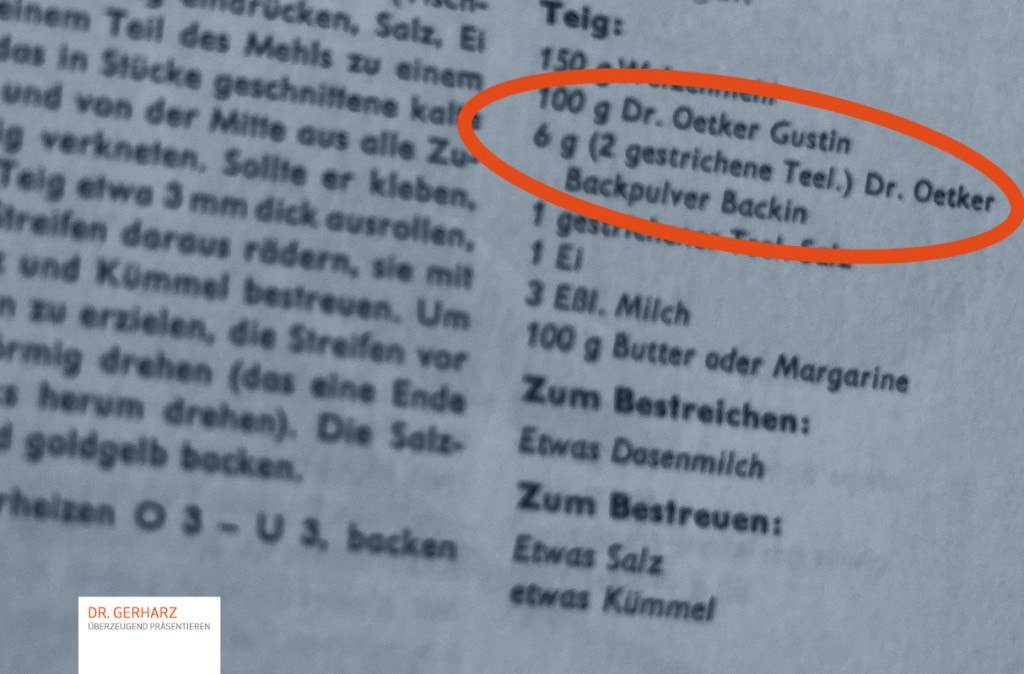Nein, Content-Marketing ist keine Erfindung des 21. Jahrhunderts. Content-Marketing gab es schon, bevor Sie geboren wurden, z.B. bei Dr. Oetker.
Die erste Ausgabe des „Dr. Oetker Schulkochbuchs“ erschien 1911 und laut Verlagsangabe ist es mit 19 Millionen Exemplaren das meistverkaufte Kochbuch der Welt. Manche Ausgaben waren so beliebt, dass es sie heute noch in unveränderten Nachdrucken gibt, z.B. die Ausgabe aus dem Jahr 1960.
Es war von Anfang an ein gutes Kochbuch, dessen Rezepte gut funktionieren und das lehrreiche Erklärungen enthält. Aber natürlich war es insbesondere Werbung:
Selbst wenn nicht jeder, der ein Rezept aus dem Buch kocht, sich an die Herstellerangabe der Zutaten hält, so kommt man doch jedes einzelne Mal, wenn man das Buch in die Hand nimmt, mit der Marke Dr. Oetker in Berührung.
Wer seinen (potentiellen) Kunden einen echten Mehrwert bietet, der riskiert damit etwas – gehörigen Aufwand und eine Portion Mut. Ob, wann und wie stark die Kunden etwas zurückgeben, dafür gibt es keine Garantie.
Klar ist aber auch, insbesondere im Vergleich zu dem, was uns heute oft begegnet: Wer im Content-Marketing diese Investition in den Mehrwert nicht tätigt, wer bloß Content „raushaut“, alle Kanäle in der Dauerberieselung bespielt, Content um des Contents willen produziert, Reichweite um der Reichweite willen erzeugt, der gewinnt vielleicht Reichweite, doch ob er damit auch Vertrauen gewinnt und seine Marke stärkt, das ist eine ganz andere Frage.
Was brauchen meine Kunden? Was begehren sie? Wo liegen echte Überschneidungen zwischen dem, wofür ich stehe, was ich kann und dem, was meine Kunden brauchen oder begehren? Und wie kann ich ihnen das so präsentieren, dass sie einen echten Nutzen davon haben? Das ist Content-Marketing, das schon seit über 100 Jahren funktioniert und das langfristig Vertrauen schafft.

